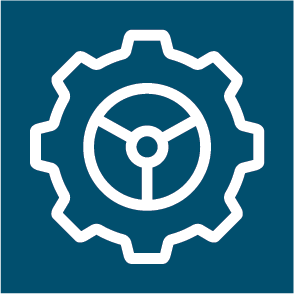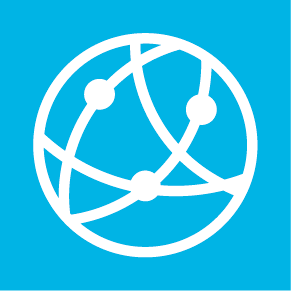While remote work is new for some — especially amidst the changes that organisations have implemented since the outbreak of coronavirus (COVID-19) across the globe — I have been working from a home office off and on for almost 20 years, and it’s allowed me to be uniquely prepared for the new reality that COVID-19 has brought to the workforce.
I have been fortunate to work for a few companies, including PeopleScout, who were very comfortable with a virtual work environment — in some cases, almost everybody in the organisation was working remotely. I also worked for several years where the culture was the opposite, and it would have been impossible for me to advance in my career if I was unable to physically come into the office each day. That experience really solidified what I already knew — I thrive in a remote work environment.
The experience I’ve had working remote for most of my career has been an absolute blessing. It’s allowed me to spend extra time with my kids, work flexible hours and form relationships with colleagues who I would not have met if I were only working in an office.
At PeopleScout, nearly half our teams were regularly working remote before COVID-19 social distancing protocols were put in place, and our experience managing these remote teams has helped in the transition as that number increases.
In this article, I’ll share how to determine whether a remote work strategy is right for your organisation during this time, highlight some best practices for engaging and managing a team of remote workers and outline the reasons why remote work matters.
Is Remote Work Right for Your Organisation?
Due to COVID-19 social distancing protocols, many people who wouldn’t normally fit the criteria for remote work are now adjusting to working virtually. However, in a scenario when you have the choice for whether a role should be remote, there are some ways you can help make that determination.
How can you be sure if a remote work programme fits into your organisation? Consider the following:
Does your team need to be together?
If your team works best with a lot of hands-on collaboration, like brainstorming sessions, whiteboarding, and other in-person activities, shifting to remote might be challenging. But if you find that it isn’t truly necessary for each team member to meet face-to-face each day, a virtual strategy could work. Consider collaborative documents and team video calls to offset the facetime you’d be missing if everyone were in the office.
Do my employees have the tools they need to work virtually?
In order to successfully communicate and complete tasks, a remote work strategy is dependent on workers having access to a computer, internet and phone. If they do, you’ll also want to restructure your onboarding process to account for remote workers. Although virtual workers can work flexible hours, you’ll want to make sure they understand if there are any specific hours they are required to be “online.” Also, ensure everyone is aware of any time zone differences that could impact communication.
Can roles be converted to remote?
Certain roles, such as client-facing or other positions where working in person is a necessity, might not be able to shift to remote work as easily as positions where a person primarily works on a computer. Alternately, if your clients are spread over a wide geography, a virtual worker might be closer to a client and be able to provide even better service than an employee in your main office. Consider offering other benefits, perks and flexible work options to employees where full-time virtual work isn’t a viable option to ensure that no employee feels left out.
Remote work doesn’t have to be all or nothing. There’s a spectrum when it comes to flexible work options, and here are a few examples:
- Part-time telecommuting
- Weekly/monthly work from home days
- Sponsored co-working spaces outside of the office
What Does a Successful Remote Team Look Like?
Whether an employee is newly hired for a remote role or you’re transitioning an existing position to remote due to COVID-19, utilising the right technology is critical. Tools like Slack, Asana and Zoom can simplify employee collaboration and serve as a substitute for face-to-face interactions in a virtual environment.
In addition to utilising these communication tools, here are some additional tips for staying connected with remote workers that I use while leading teams at PeopleScout:
- Set up regular phone calls. I make sure to schedule weekly check-ins with each of my team members to see how they are doing and to stay aligned on project updates.
- Embrace informality. When teams are working from a large distance apart, informal communication (in addition to necessary formal conversations like meetings and conferences) can help foster strong connections between team members. Sometimes I’ll send team members a quick text message or IM to check in and remind them I’m available if they need anything.
- Celebrate successes. In an environment where it can be easy to feel secluded, remember to personally thank team members for all they do to contribute to the goals of the organisation.
- Try new ways of connecting. It’s important that your virtual team doesn’t feel left out from events that may be occurring in the main office. Each year, my team holds a virtual holiday party where we all get together for an hour or so to bring our little community together and reflect on the year’s successes.
- Capitalise on face-to-face interactions. While travel is currently limited, when I’m able to visit a PeopleScout office or a town where a team member lives, I’ll always make a point to try to schedule a lunch or coffee break to catch up with colleagues in-person.
- Communicate purposefully. Be intentional when reaching out to people. Especially while we are all no doubt facing uncertainty, stress and anxiety about the current COVID-19 situation, be sure to remember to check in and make sure your team members are doing okay. We’re all facing this incredible challenge together, and your team members should feel that their manager truly cares.
Another important engagement strategy is fostering company culture, which can be difficult to do successfully when not everyone is together in an office each day. At PeopleScout, we have our DNA culture principles which make us who we are. To ensure my team feels connected to these culture principles, I make a point to celebrate each of their individual characteristics.
One of the beautiful things about having a virtual team is that it allows for a diverse workforce full of people with different backgrounds, talents, experiences, and points of view. Each person brings something unique to the team which continues to add value to our clients in ways that a small local team may not be able to.
Remote Work is Here to Stay
While at one time it may have seemed like a fleeting trend, remote work has proved it’s far from temporary. Virtual work has established itself as a workplace norm, and with the challenges brought upon by the outbreak of COVID-19, it doesn’t appear to be leaving anytime soon.
It’s in the Numbers
66% – A 2019 report by Zapier shows that 2 in 3 knowledge workers think the traditional office will be obsolete by 2030.
69% – According to data from the Society for Human Resource Management (SHRM), organisations have increasingly offered telecommuting options over the last five years, with ad hoc telecommuting showing the greatest growth. At 69%, it’s up 13% from 2015.
74% – 74% of U.S. knowledge workers would be willing to quit their job to work remote, and 26% have already done so, according to Zapier.
It’s What Employees Want
According to SHRM, just over a quarter of organisations already offer full-time telecommuting, so setting up a strong remote work system before the rest of the competition can help you stand out in candidates’ eyes.
Virtual work has benefits for both employees and employers. The leading reasons employees want remote work options are to save money, to be able to work anywhere and have more time with family. Many employees also say they’re more productive at home, and this increased productivity carries over into the organisation. In addition, remote work can have a positive impact on the mental health of employees, leading to a stronger company culture and overall employee experience.
Working Together Toward Remote Work Success
As you implement a remote work strategy into your organisation, especially during these uncertain times, it’s important to lead your teams with a lot of understanding and grace. Establishing a successful work from home strategy is going to be a transition for all — and for some, not an easy one.
Understand that life is going to happen. Doorbells may ring, dogs may bark or kids may yell down the hallway while you’re on video calls. However, it is through consistent communication and purposeful engagement that you and your team will be able to navigate this new normal together.
To learn more about ways employers can respond to the coronavirus (COVID-19) outbreak, visit our Resource Centre.











